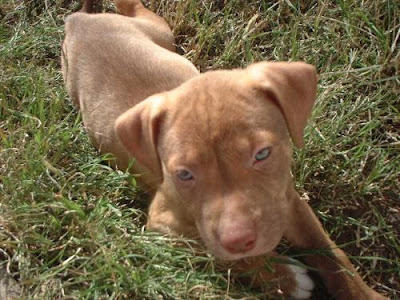BTW, that's the one couch that the humans have deemed dogs are not allowed on.
Yes, this couch:

The same couch:


























A male Chihuahua's tenacity in guarding his beloved pit bull girlfriend helped save their lives. Now, the couple is inseparable.

Sometimes even an abandoned, injured dog with a bad rap ends up doing great things. And so it was with a female pit bull, being guarded by her beloved boyfriend, a Chihuahua.
What the Pennsylvania dog warden did not realize when he rescued the pair on Labor Day, was just what a sweet story these two dogs had to tell.
Once the pit bull got into a crate on the warden's truck, the Chihuahua would not follow. Instead, he put himself between the two, barking and growling at the warden.
"So I sat on the ground ... all the time having a conversation with a Chihuahua that was guarding a Pit Bull!," the warden writes in a story about this odd couple.
"Eventually he let me get close enough so we could have a face to face & heart to heart discussion. I told him that his intentions were very noble and would not go unrewarded for the both of them."
The warden would not follow his usual routine when finding a pit bull — to take the dog to a facility that could euthanize her within 48 hours. "Due to this little guy's tenacity and I do believe true affection for his Pit Bull lady," the warden writes, "I was not going to let that happen." Cute couples, it turns out, melt hearts. The warden found them safe haven at the no-kill Washington Area Humane Society. He asked the staff, could they please find room in their already overflowing no-kill shelter for just two more dogs?
The warden found them safe haven at the no-kill Washington Area Humane Society. He asked the staff, could they please find room in their already overflowing no-kill shelter for just two more dogs?
"We truly didn't have room but we could not let them go," says Alice Wancowicz, assistant manager of the shelter in Eighty Four, PA. "They stayed in the bathroom for two days until we could get a run open."
And so, the staff embraced the pair, naming them Bonnie and Clyde. "We were trying to think of a good duo kind of name," says Wancowicz. "They're kind of like rebels but they're not, they stick together."
Now, it is Bonnie who protects little Clyde. "They are just adorable together," Wancowicz says. "Bonnie just lays there and Clyde jumps all over her. They are totally inseparable." The couple goes on walks together, eat together, sleep together, with Clyde snoozing on top of Bonnie or cuddled within her front arms.
"When Bonnie got spayed, Clyde was beside himself," Wancowicz says. "He wouldn't settle down, was crying, on your lap, off your lap, you could tell he wasn't himself."
So it comes as a surprise that they have not been adopted. "They would fit in anywhere," says Wancowicz. "They don't have issues with adults or kids."
The dog warden writes that we need to change our opinions of pit bulls: "You may find a loving, loyal and dedicated companion to fight for like our Chihuahua friend did. Perhaps this story will give you a second chance to revisit your thoughts and opinions concerning Pit Bulls. They deserve the opportunity to overcome a stereotype that can most certainly lead them to death."
We know that Tonic readers like to take action. If you want to help out Bonnie and Clyde, click here (www.washingtonpashelter.org) to visit the Humane Society's website. Or, you can call them at 724-222-PETS (7387)
































